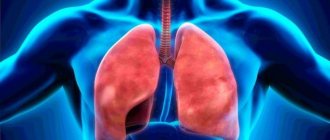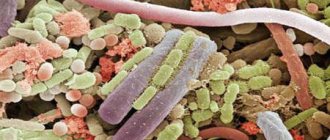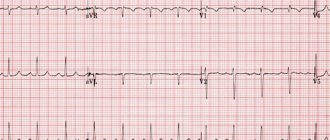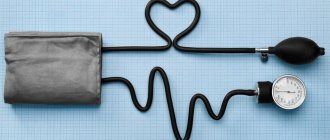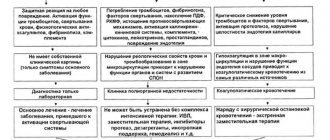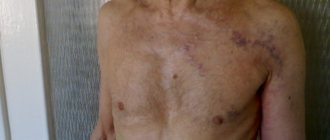A large number of nerve endings are concentrated in the gastrointestinal tract, so stomach pain with VSD often appears. Doctors call autonomic disorder a monkey that copies the symptoms of any disease, especially those that the patient is afraid of. Pain syndrome against the background of VSD can be perceived as a manifestation of a dangerous disease. Because of this, the person begins to become more nervous and the pathology worsens.
Symptoms of VSD that interfere with living a full life
- causeless headache
- frequent dizziness
- fainting
- frequent mood changes
- touchiness
- tearfulness
- increased fatigue
- sleep disorder
- panic attacks and anxiety
- flickering "flies" before the eyes
- feeling of lack of air
- dyspnea
- suffocation
- difficulty breathing
- rapid and forced breathing
- pressure surges
- aching and pressing pain in the left side of the chest
- “heaviness in the heart” after stress
- cardiac arrhythmias
- decrease in heart rate to 50-60 beats per minute
- flatulence
- nausea
- vomit
- diarrhea and constipation
- heartburn
- belching
temperature
- increased sweating, especially of the hands and feet
- hot flashes
- cold extremities
- chills
genitourinary area
- frequent urination
- itching and pain in the genital area
- decreased libido
- immaturity
Symptoms of VSD
can be combined in any way you like.
Vegetative-vascular dystonia ( VSD
) is not a separate disease, but a complex of symptoms of a disorder of the body’s autonomic system.
VSD is a chronic disease with alternating periods of remission and exacerbation
- Emotions frequent mood swings
- touchiness
- tearfulness
- increased fatigue
- sleep disorder
- panic attacks and anxiety
- flickering "flies" before the eyes
- feeling of lack of air
- pressure surges
- flatulence
- causeless headache
- frequent urination
- increased sweating, especially of the hands and feet
Causes of VSD
Doctors identify many factors in the development of vegetative-vascular dystonia. But the only thing that cannot be influenced is genetic predisposition, when the child inherited this syndrome from one of the parents. But even in this case, you can prevent the development of VSD if you eliminate other causative factors:
chronic stress, which forces the entire body to work under excessive stress;
lack of rest and sleep, due to which the nervous system does not have time to recover from the stress of the previous day;
poor nutrition, leading to a deficiency of nutrients, vitamins and minerals, without which proper biochemical reactions are impossible;
bad habits that cause intoxication and lead to the formation of free radicals;
obesity and endocrine disorders, in which many body functions change.
Symptoms of VSD
Symptoms of VSD in women are very diverse and can vary widely. It depends on what causes the condition, how long it has been present, and whether any measures are being taken to treat it. But most often with VSD
the following symptoms are observed:
headache, dizziness (even fainting), which occur for no apparent reason;
unstable emotional state (mood swings, tearfulness, unreasonable anxiety and irrational fears);
difficulty breathing (shallow, rapid, feeling of lack of air or inability to breathe in deeply, shortness of breath);
disturbances in the functioning of the heart (slow heartbeat, pressing pain or heaviness in the left side of the chest after psycho-emotional stress, surges in blood pressure);
disturbances in the functioning of the gastrointestinal tract (constipation, diarrhea or their alternation, not associated with a change in diet, dyspeptic symptoms - heaviness in the stomach after eating, belching, heartburn);
increased sweating not associated with increased ambient temperature or physical activity;
increased sensitivity to cold and heat (chilly hands and feet, hot flashes);
decreased libido, discomfort in the intimate area;
frequent or infrequent urination, not associated with drinking habits or kidney disease.
Even one of the listed symptoms, observed regularly (especially if it intensifies after a stressful situation), is a reason to suspect VSD as the cause of this condition.
Treatment of VSD largely depends on the causes of the development of this syndrome, but always involves complex solutions. Taking medications, supplemented by correction of diet and lifestyle, as well as psychotherapeutic assistance (if necessary) will allow you to forget about VSD as a condition that ruins your life.
Manifestations of vegetative-vascular dystonia are known to many. Meanwhile, not all doctors consider it a disease; some argue that it is just a set of symptoms. While scientists argue and decide, many people experience signs of vegetative-vascular dystonia on themselves. In principle, they do not care what medical terms are used to call those unpleasant sensations with which they live, sometimes for years.
Vegetative-vascular dystonia is a disruption of the autonomic nervous system, which maintains the internal state of the body (blood pressure, metabolic rate, body temperature, respiratory rate, sweating, etc.) and mobilizes the body’s adaptive forces if necessary. According to some estimates, up to 80% of people are susceptible to this disorder, but only a third require treatment. This disorder occurs three times more often in women than in men. The first manifestations may occur in childhood or adolescence.
Factors in the development of vegetative-vascular dystonia:
- Emotional stress;
- Hormonal changes in the body, for example, during puberty, pregnancy or menopause;
- Overload, physical and mental;
- Exacerbation of chronic diseases;
- Neurotic disorders;
- Hereditary predisposition.
Symptoms and causes
The main cause of this disease is a modern completely unhealthy lifestyle. Insignificant physical activity, multiplied by constant nervous tension, insufficient rest in general and poor sleep in particular, leads to the development of vegetative-vascular dystonia and its variety such as intestinal and stomach neurosis. In addition, this disease develops much more often in those who have a corresponding hereditary predisposition.
Click to enlarge
Often, the development of neurosis of the stomach and intestines is preceded by strong emotional experiences and psychological trauma. However, VSD is rarely associated with serious mental illness. Particularly susceptible to this disease are those prone to self-hypnosis, suspicious people who relate to their health with an increased sense of anxiety. It should be noted that among people actively involved in sports, there are almost no patients with VSD.
Most often, food neurosis makes itself known through the following symptoms:
- Malaise, lethargy, general depression, poor sleep, low performance.
- Frequent heartburn, even with a perfectly healthy diet.
- Insufficient or excessive appetite.
- Unreasonable changes in gastronomic preferences, up to aversion to once favorite dishes.
- Frequent pain in the stomach area, which can spread to neighboring organs.
- Discomfort caused by a feeling of fullness or emptiness in the stomach.
The above symptoms are often supplemented by signs typical of other conditions of a neurotic nature:
- Depression.
- Migraine.
- Sudden and frequent mood changes.
- Irritability, etc.
Often they help to distinguish food neurosis of the stomach and intestines from diseases of a gastroenterological nature and, accordingly, to use the help of a psychologist and neurologist.
How does vegetative-vascular dystonia manifest?
- Fluctuations in blood pressure, changes in heart rate (most often tachycardia), pain in the left half of the chest.
- A feeling of lack of air, difficulty breathing, shortness of breath, suffocation with vegetative-vascular dystonia - these respiratory changes occur due to autonomic imbalance. Breathing problems can be constant, teenagers especially often suffer from this; there is a constant lack of air, as if the required amount is not being filled into the lungs.
- Nausea, vomiting, abdominal pain, belching, heartburn, constipation, diarrhea;
- Slight increase in temperature, chills, waves of heat and cold, increased sweating of the palms and feet. The temperature with vegetative-vascular dystonia can remain at low-grade levels and may rise in the evening, but not higher than 38 degrees.
- Dizziness, lightheadedness.
- Emotional disorders: fears, anxiety, restlessness, increased fatigue and irritability, internal tension, sleep and appetite disorders.
Symptoms of vegetative-vascular dystonia can affect one or more body systems. The general condition of the patient depends on this; as a rule, symptoms manifest themselves in a chronic form.
But against the background of external or internal changes, an exacerbation of vegetative-vascular dystonia may occur. External changes could be, for example, moving to a different climate zone. Internal changes come in different forms. The most serious consequences come from changes in hormonal levels; this occurs during certain periods of life. Vegetative-vascular dystonia occurs quite often during pregnancy. Heartbeat increases, dizziness, anxiety and fear arise. These symptoms reduce the mood of a pregnant woman and darken the happiness of waiting for a new life. If the symptoms are severe and bothersome, then, of course, it is better to consult a doctor. The most unpleasant thing is that for many, vegetative-vascular dystonia occurs in the form of attacks that appear from time to time, so-called vegetative crises. An attack of vegetative-vascular dystonia can occur from once every few months to two to three times a week. Its frequency and manifestations vary from person to person. As a rule, there is a provoking factor: overload, stress, sudden change in weather, exacerbation of a chronic disease. Before the onset of an attack, some signs appear, individual for each person. Some feel a general malaise, others experience pain, numbness in the legs, and chills. As the attack progresses, the sensations intensify, fear, even panic increases, the person becomes either very excited or depressed. Usually, a person knows about his harbingers of a crisis and can take some measures to alleviate it. It is very important not to panic and try to control your condition. If this is successful, the person will not experience fear of the situation or condition that triggered the attack. In any case, if an attack occurs, you need to provide an influx of fresh air, take 20 - 30 drops of Corvalol or Valocordin, in case of severe panic, take a sedative; if there is an increase in pressure, take a hypotensive one.
Fainting can also be a manifestation of an attack of vegetative-vascular dystonia. It occurs when there is a sharp decrease in vascular tone, with a strong drop in blood pressure, when the brain lacks oxygen. Therefore, first aid consists of ensuring a rush of blood to the head; the person must be laid down so that it is possible to raise his legs. If fainting has not yet occurred, you need to sit down with your head down. Ammonia irritates the olfactory receptors and prevents fainting or brings a person “to himself.”
In most cases, objective data do not show any pathology. This can make it difficult to make a diagnosis; an inattentive doctor may even dismiss such a patient. And the person needs help. It is necessary to consult a doctor if the symptoms of vegetative-vascular dystonia disrupt the usual rhythm of life, force you to give up something, if there is a persistent feeling of internal tension and the symptoms intensify or new ones are added.
The neurologist, of course, will prescribe treatment and help relieve unpleasant symptoms, but prevention of vegetative-vascular dystonia is very important. It consists of a healthy lifestyle and a good mood. You need to properly distribute the load and adequately respond to negative events, and not give in to panic.
. or: Neurocirculatory dystonia, NCD, VSD
Traditional treatment methods
Every person at least once has encountered such unpleasant phenomena as pain and heaviness in the abdomen, belching, heartburn and flatulence. Their one-time repetition may indicate poor quality food or an unbalanced diet. This often happens to those who like to eat on the go.
Therefore, if you are thinking about treating gastrointestinal neurosis, then first of all it is better to eliminate the cause of the neurosis. Why is it better to start with this? Because symptoms are a manifestation of the presence of causes of gastrointestinal neurosis, firstly. And secondly, the very name “gastrointestinal neurosis” indicates the cause of the disease - neurosis. Those.
In general, any abnormalities in the functioning of the gastrointestinal tract indicate its dysfunction, and it is better to pay attention to this before the symptoms develop into a chronic disease. Most often, problems with the gastrointestinal tract are associated with neurosis (it’s not for nothing that they say that all diseases are caused by nerves) and in rare cases with mechanical damage (for example: damage to the gastric mucosa due to abuse of spicy food).
Gastric neurosis is a functional disorder of the stomach in various neurasthenic, hysterical and psychosthenic neuroses. Since nerve endings are present in absolutely all organs of the human body, neurosis can manifest itself in any system, including the digestive system. In medicine, neurotic conditions of the stomach or intestines mean dyspepsia of these organs, that is, disruption of their function due to inadequate regulation of nervous activity.
According to medical statistics, the greatest predisposition to neurotic conditions of the stomach and intestines is observed in women aged twenty to forty years. As a rule, the disease occurs during the period of maximum vital activity and if left untreated, the condition may worsen when pathological symptoms become very pronounced and contribute to a significant decrease in the quality of life.
An ailment that almost everyone faces, especially during high work and stressful activity, is gastrointestinal neurosis. If diagnosed early and correctly, treatment will not be difficult. But the symptoms of intestinal neurosis are very easy to confuse with gastritis, so you need to know the list of its signs.
Various folk remedies, decoctions and tinctures are considered the most effective and safe to use; they do not contain chemicals and have virtually no side effects. They improve not only the condition of the gastrointestinal tract, but also help get rid of painful sensations, improve general condition, and cleanse the body of toxins. They improve the functioning of the nervous system and have calming properties.
- Oregano. It should be taken to relieve tension; it has a good effect on the digestive tract and relieves symptoms of nervousness. Has an analgesic effect. You can take it several times a day, preferably at night. Brew 6 tablespoons per liter of water, infuse for 2-3 hours. Has no contraindications.
- Tincture of valerian officinalis 1 tbsp. l, motherwort 1 tbsp. l, hawthorn 2 tbsp. l and oregano 3 tbsp. l. Brew in 1 liter of water and leave for half an hour. Take a small mug in the morning, at lunch and before bed. Excellent fight against stress and nervous overexcitation. Has a satisfactory effect on the stomach and intestines.
- Antiemetic and tones the nerves - lemon balm tea (3 tbsp. l/0.5 l). Goes well with valerian. Helps you sleep.
- St. John's wort helps well with intestinal neurosis; it has a gentle and intense effect on the intestines, cleanses well and protects against microbes. Take in proportions of 5 tbsp. l per liter of water, take 3-4 times a day.
- A tablespoon of flaxseed oil every morning is an excellent remedy for neurosis; it cleanses and relieves stomach pain and heartburn during neurosis, and improves digestion.
- To get rid of loose stools, it is best to eat nothing for a day. If you really want, you can boil the rice without salt. Rosehip tinctures are also welcome. During the week you need to stick to portioned meals (4-5 small portions per day).
- If constipation causes discomfort, you can take an enema of chamomile decoction; it cleanses the intestines well. Eat foods high in fiber, lots of fruits and vegetables. Drink kefir.
Treatment of intestinal and stomach neurosis should be carried out not by one, but by several doctors. This is explained by the fact that it is necessary to influence not only the psychological component, but also the symptoms of the disease. For example, if a patient suffers from constant diarrhea, this can cause severe dehydration, which can lead to serious consequences.
It is worth noting that some doctors are overly zealous when trying to convince the patient to begin a serious fight against this disease. Sometimes threats of cancer development are used to achieve this. In fact, there is no basis for such statements, since intestinal neurosis does not contribute to the formation of malignant cells.
In order to determine a treatment strategy, the efforts of the following specialists are necessary:
- Psychotherapist. Often it is his efforts that are decisive, since he can save the patient from hysteria, obsessive thoughts, increased emotionality, anxiety and other disorders that provoke the development of the disease.
- Neuropathologist. He is charged with the task of choosing those medications that will bring the patient’s nervous system back to normal or at least bring it closer to it. Typically, tincture of motherwort, valerian and the like is used for this.
- Gastroenterologist. After analyzing the patient’s condition, this specialist must develop a nutrition plan for him that will improve his condition. In addition, he may prescribe any medications that minimize the discomfort associated with the disease. As a supplement, chamomile (or olive oil) microenemas are sometimes prescribed.
The joint efforts of the above specialists should provide a comprehensive effect that will eliminate the disease and return the patient to health. The rehabilitation program usually includes:
- Special food.
- Psychotherapy.
- Taking medications.
Sometimes it is useful to supplement this program with individual elements of traditional medicine, but this should also be done under the supervision of a doctor: the patient should not do this at his own discretion. Very often, in order to reduce the load on the nervous system, doctors recommend baths with herbal and herbal decoctions. A well-proven mixture that includes:
- Wormwood: 1 tsp.
- Yarrow: 2 tsp.
- Melissa: 2 tsp.
- Mint: 3 tsp.
This mixture should be boiled over low heat for 15–25 minutes, after which you can take baths with it.
Treatment is carried out in two directions: psychological counseling, medical treatment of symptoms. One without the other will be ineffective.
Neurosis of the stomach treated with psychotherapy.
- Identifying the causes of internal tension, identifying stress factors in the patient’s life.
- Increasing stress resistance by correcting self-esteem and self-confidence.
- Formation of the ability to overcome difficult life situations. The psychologist teaches the client to see opportunities for personal growth and life improvement in difficulties.
- Drawing up a rehabilitation plan to change the patient’s life.
There are many psychological causes of stress:
- job dissatisfaction;
- unprocessed psychological trauma;
- non-acceptance of oneself;
- fear of loneliness;
- the passing of a loved one;
- guilt;
- old grudge;
- insecurity;
- physical, intellectual, emotional exhaustion;
- fear of responsibility, etc.
The psychologist and the patient jointly find the true cause and develop a work plan. This situation requires a private approach. As psychological problems are eliminated, somatic signs of irritable bowel go away on their own.
Neurosis of the stomach: drug treatment.
- Complete diagnosis of the gastrointestinal tract to determine or exclude primary diseases such as gastritis, ulcers, polyps.
- When a disease is detected, appropriate treatment is prescribed. It depends on the diagnosis.
- If no organic lesions are found, then only a psychotherapist will deal with the patient.
- To relieve symptoms and alleviate the condition, the patient is prescribed painkillers and antispasmodics.
- The psychotherapist prescribes sedatives. The recipe depends on the severity of neurosis.
Treatment is complemented by diet and physiotherapy. The diet is selected strictly individually, but alcohol, smoking, and fatty foods are necessarily excluded.
Some useful physical treatments include massage, relaxing warm baths with sea salt and aromatic oils. Any activity is useful, even simple walking. When playing sports, endorphins are produced. They stop the production of the stress hormone cortisol.
- antacids;
- alginates;
- proton inhibitors;
- receptor blockers;
- sedatives with a calming effect, which are definitely needed against the background of depression.
Additionally, consultation with a specialist psychologist is possible; in more advanced cases of neuroses, recommendations from a psychiatrist.
Drug treatment should be carried out under the supervision of a doctor. Familiar remedies such as Gastal, Maalox, Phosphalugel help relieve attacks of heartburn, rather than treat it.
Therefore, medications alone cannot eradicate nervous heartburn. This requires a full range of measures to eliminate or harden the body to stress.
Changing lifestyle is an important achievement in the patient's mind. Changing your lifestyle involves the following activities:
- Binge eating. Control the amount of food eaten at one time.
- Eating before bed. Food should have time to digest before bedtime. Otherwise, it is possible that the sphincter will weaken, facilitating the reflux of gastric juice into the esophagus.
- Physical activity immediately after eating is contraindicated. They slow down the work of the sphincter.
- Nerves. People who get little rest, sleep poorly, are often depressed, suffer from neuropsychiatric disorders, and have nervous heartburn. This is a reason to reconsider your attitude towards life. If you cannot change the situation, then change your attitude towards it. If you have nervous heartburn, you should not take sedative medications frequently either. They affect all organs, including weakening the functioning of the sphincter.
- Medicines need to be used, but the treatment is selected by the doctor, the scheme and duration of the course is his prerogative. Therefore, do not delay visiting him.
- A glass of warm water in the morning, on an empty stomach, helps normalize acidity without the use of drugs.
- Dizziness
- Nausea
- Stomach ache
- Vomit
- Belching
- Irritability
- Insomnia
- Rapid pulse
- High blood pressure
- Heartburn
- Migraine
- Hunger after recently eating
- Flatulence
- Feeling of heaviness in the chest area
- Feeling of heaviness in the epigastric region
- Panic attacks
- Nervous chewing movements in the absence of food
- Feeling disgusted by food
- Nervous awakenings
- Nervous colic
- taking medications to relieve pain in the stomach and intestines;
- taking medications to treat nervousness, neuralgia, and their manifestations;
- providing psychological assistance, working with a psychologist or psychotherapist;
- relieving general stress in the body;
- consultation with a nutritionist, introduction of an individual diet (to restore the digestive process);
- physiotherapy.
Diagnostics
Symptoms of vegetative-vascular dystonia syndrome
- From the cardiovascular system: surges in arterial (blood) pressure;
- pain in the heart area;
- arrhythmia (rapid heartbeat).
- belching;
- feeling of suffocation;
- chills;
- dizziness;
- increased irritability;
- frequent urination;
- Diseases of the central and peripheral nervous system (especially the hypothalamus, limbic system, brain stem).
- Stress.
- Poor nutrition (overeating, eating high-calorie foods before bed, consuming fatty, salty foods).
- Mental and/or physical overload.
- Sedentary lifestyle.
- Chronic intoxication (poisoning) with tobacco smoke, alcohol.
A neurologist will help in treating the disease
Diagnostics
- Analysis of medical history and complaints of the disease (fatigue, dizziness, pain in the heart, increased sweating, shortness of breath, nausea, vomiting, etc.).
- Depending on the symptoms - consultation and examination with relevant specialists (for pain in the heart, surges in arterial (blood) pressure - with a cardiologist, for abdominal pain, nausea, diarrhea - with a gastroenterologist, etc.).
- During the diagnostic process, it may be necessary to conduct various examination methods, such as: electrocardiography with stress tests;
- blood and urine tests with a biochemical and hormonal profile;
- 24-hour blood pressure monitoring;
- ultrasound examination of internal organs;
- transcranial dopplerography (TCD) - ultrasound of cerebral vessels;
- electroencephalography (study of the electrical activity of the brain).
Psychological nature of stomach pain
With the help of the senses, everyone receives information from the outside world. Depending on the relevance and emotional mood:
- one part goes to the subconscious;
- the second brain pushes into distant sections.
The problem forms into a thought form and occupies the mind. With a successful solution, the energy of tension goes away and the person calms down.
If you cannot solve a problem at the level of feelings or physics, or let it go consciously, the stomach comes to the aid of the psyche to “digest” the situation. It begins to produce an increased amount of hydrochloric acid in order to dissolve the invisible “microbes” of consciousness in the aggressive environment of hydrochloric acid and pepsin.
Depending on their psychotype, people react to the problem differently:
- some anger and discontent are directed inwards;
- others take it out on those around them.
In the first case, dyspeptic disorders appear. Nausea, vomiting, diarrhea is a subconscious need to throw out emotions. Heartburn is caused by suppressed aggression. Symptoms of gastritis occur with pride, which prevents you from asking for help from loved ones, accumulated grievances. Discomfort in the abdomen signals fear for life. As long as a person is in a calm state, he feels normal. A cascade of negative processes in the epigastric zone is triggered by the energy of anxiety or strong emotion.
Treatment of vegetative-vascular dystonia syndrome
- Treatment of the disease that caused the syndrome of vegetative-vascular dystonia. These are diseases of the central and peripheral nervous system (especially the hypothalamus, limbic system (a set of brain structures involved in the regulation of behavior, emotions, memory, wakefulness and sleep), brain stem).
- Physiotherapy (massage, douches and wraps, acupuncture) with the aim of a relaxing (calming) effect on the central nervous system, which helps reduce anxiety, reduce manifestations of the cardiovascular system (heart rhythm disturbances, surges in arterial (blood) pressure, etc. .).
- Elimination of overwork (refusal of excessive physical and mental stress (work), night sleep lasting at least 8 hours), walks in the fresh air, moderate regular physical activity, contrast shower.
- Elimination of emotional stress.
- Changing your diet (increasing the amount of vegetables and fruits in your diet, limiting the consumption of fatty and fried foods, frequent meals in small portions).
- Quitting bad habits (smoking, alcohol).
- Symptomatic treatment: for insomnia - sleeping pills as prescribed by a doctor;
- for increased anxiety - sedatives;
- for pain - painkillers;
- for nausea and vomiting - antiemetics;
- for arrhythmias - antiarrhythmic drugs;
- for diarrhea (diarrhea) - antidiarrheal drugs.
Therapeutic measures
Any pathology associated with a disorder of the nervous system requires taking into account the individual characteristics of the patient when prescribing treatment. To eliminate abdominal pain due to VSD, it is necessary to get rid of provoking factors.
To eliminate abdominal pain due to VSD, it is necessary to get rid of provoking factors.
Consultations may be required to determine treatment strategy:
- Psychotherapist. He is able to help the patient cope with hysteria, hypersensitivity, obsessive thoughts, anxiety and other disorders.
- Neuropathologist. Selects medications that can normalize the functioning of the patient’s nervous system.
- Gastroenterologist. Develops a nutrition plan that improves the patient's condition. If necessary, the doctor prescribes medications to reduce the discomfort caused by the disease.
If the digestive organs begin to hurt as a result of autonomic dysfunction, the help of a psychologist may be required. Comprehensive treatment of disorders of the digestive system includes:
- properly organized nutrition (containing a sufficient amount of nutrients, minerals and vitamins, avoidance of fried, fatty, spicy foods);
- fractional meals (eat often and in small portions);
- moderate physical activity, sports;
- walks in the open air;
- taking sedatives of plant origin (valerian, hawthorn, motherwort, lemon balm, mint).
If the digestive organs begin to hurt as a result of autonomic dysfunction, the help of a psychologist may be required.
To eliminate the consequences to which the gastrointestinal tract was exposed, it is necessary to give up bad habits. The comprehensive treatment of disorders of the digestive system includes properly organized nutrition. In severe cases, it may be necessary to prescribe antidepressants, tranquilizers, and sleeping pills. Antiemetic drugs, adsorbents, and antioxidants are used as symptomatic treatment. To eliminate the consequences to which the gastrointestinal tract was exposed, it is necessary:
- replenish your diet with fresh fruits and vegetables;
- maintain a diet;
- take vitamin complexes;
- to refuse from bad habits;
- Antiemetic drugs, adsorbents, and antioxidants are used as symptomatic treatment;
- to improve peristalsis - proton pump blockers, motor stimulants;
- in severe cases, it may be necessary to prescribe antidepressants, tranquilizers, and sleeping pills.
Although drug treatment is not of primary importance, it cannot always be avoided. In some cases it is necessary to use:
- antispasmodics;
- antacids;
- enzymes;
- gastroprotectors;
- analgesics.
Complications and consequences
- Vagoinsular vegetative crisis (characterized by a sharp release of insulin into the blood, increased intestinal motility (rumbling in the abdomen, the urge to defecate), dizziness, a feeling of a sinking heart, chills, numbness of the extremities).
- From the cardiovascular system: hypertension (persistent, prolonged increase in arterial (blood) pressure);
- coronary heart disease (a group of diseases that are characterized by impaired circulation in the arteries, designed to provide the heart muscle (myocardium) with the necessary blood supply);
- angina pectoris (compressive pain behind the sternum);
- stroke (acute cerebrovascular accident);
- heart attack (death of organ tissue due to insufficient blood supply).
- atony (weakening of muscle tone) of the intestine;
- panic attacks
(an unexplained, painful attack of severe anxiety and fear);
- urinary incontinence;
Characteristic symptoms
Not all types of digestive disorders are associated with vegetative-vascular dystonia. If you find blood and mucus in your stool, you should immediately consult a doctor, as unbearable pain with the appearance of bloody discharge may indicate a more serious pathology. Mild nausea is a classic symptom of VSD; it is often accompanied by an increase in blood pressure, especially during a panic attack.
Digestive dysfunction in vegetative-vascular dystonia has a number of characteristic signs:
- stomach pain of a psychological nature, which disappears after eliminating stress factors;
- feeling of a “lump in the throat”, difficulty swallowing;
- morning nausea, decreasing in the evening;
- the appearance of a gag reflex immediately after eating;
- at times there may be increased appetite;
- refusal of food, sudden weight loss;
- rumbling in the stomach, bloating, heartburn, frequent belching;
- Digestive symptoms of VSD include gastrointestinal motility disorders - diarrhea, constipation, irregular bowel movements, which do not give a feeling of relief;
- irritable bowel syndrome (IBS) is a common phenomenon in neuroses and VSD;
- spasmodic pain in the lower abdomen;
- decreased sense of taste.
Causes of development of autonomic dysfunction (VSD)
Such symptoms must be differentiated from protracted neuroses. Depressive spectrum disorders can be accompanied by a complete refusal of food, bulimia, and, with the development of severe mental disorders, by the consumption of inedible foods. With vegetative-vascular dystonia, taking psychotropic drugs is very rarely allowed. VSD, which affects the gastrointestinal tract, should not be confused with food neurosis; treatment of the former includes only mild medications.
Prevention of vegetative-vascular dystonia syndrome
Physiotherapy in neurology - Gurlenya A.M. - Practical guide - 2008 Practical physiotherapy - Ushakov A.A. - Practical guide - 2009 Pediatrics - Baranov A.A - national guide - 2009
What to do with vegetative-vascular dystonia syndrome?
- Choose a suitable neurologist
- Get tested
- Get a treatment plan from your doctor
- Follow all recommendations
Symptoms of vegetative-vascular dystonia (VSD) are varied and non-specific, as is typical for most other diseases. Manifestations of vegetative-vascular dystonia are associated with the fact that the balance between the two branches of the autonomic nervous system is periodically disturbed, which is normally quickly restored.
Symptoms of VSD are recorded by patients constantly from day to day or in paroxysms, which implies the development of a vegetative crisis. Such crises occur in the form of pressure surges, fainting, disorders in the respiratory or digestive system, or panic attacks.
Diagnosis and treatment
When visiting a doctor, it is important to talk in detail about all the problems that concern you. The VSD and the stomach are closely related. Therefore, it is impossible not to take into account all the signs that appear in case of disturbances in the gastrointestinal tract and malfunctions of the vascular system. The following types of examination may be needed:
An ECG will help identify problems with blood vessels.
- electrocardiogram;
- ultrasound examination of the abdominal organs;
- blood analysis;
- fibrogastroduodenoscopy.
When making a correct diagnosis, you must first exclude other possible diseases that contribute to gastric upset. It can be:
- colitis;
- pancreatitis;
- gastritis;
- peptic ulcer;
- various neoplasms.
If your stomach hurts, you should consider whether there have been any recent triggering factors, such as:
- panic attack;
- stress;
- overwork;
- lack of sleep.
Stomach upset is one of the signs of vegetative-vascular diseases. Therefore, if the cause is identified as VSD, then, first of all, it is necessary to treat it. For this, a number of medications and special physical training are prescribed. It would be useful to visit a psychologist to work through internal problems - fears, neuroses, complexes.
General symptoms
The main symptoms of VSD include:
- Increased fatigue, morning lethargy, weakness.
- Discomfortable sensations localized in the chest and heart.
- Psycho-emotional disorders – increased level of anxiety, suspiciousness, irritability, unmotivated mood swings, decreased quality of sleep.
- A feeling of insufficient air supply, which leads to deep and frequent breaths, pressure in the chest, and suffocation.
- Headaches are accompanied or replaced by dizziness.
- Excessive sweating.
- Pressure surges.
- Pain in the limbs, spine.
- Tingling in the hands, numbness, swelling.
- Memory loss, absent-mindedness.
- Meteosensitivity.
Symptoms of vegetative-vascular dystonia are different for each person, their severity depends on the presence of concomitant diseases and the type of VSD.
Abdominal pain with VSD
In this case, the causes of abdominal pain with vegetative-vascular dystonia are approximately the same as in previous cases. These are excess stress, fatigue, hormonal imbalances. That is why women during menopause and adolescents are most often susceptible to this disease. This can also be facilitated by:
- Heredity.
- Acute viral diseases.
- Cervical osteochondrosis.
- Diseases of the digestive system.
- Allergy.
- Diabetes.
- Lack of physical activity.
How to get rid of it?
First of all, you should remember that the cause of abdominal pain with vegetative-vascular dystonia is not the diseased organ itself, but a malfunction of the nervous system. Therefore, try to repeat to yourself as often as possible (at least every half hour) that you are completely relaxed and calm, and all your affairs are in perfect order. It is not necessary to strictly follow this formula: you can come up with your own with similar content.
In addition, you should improve your lifestyle. First of all, you should take up morning exercises, first choosing simple, uncomplicated exercises that only slightly activate your breathing. You can also use cold and hot water, using them according to the situation. Exercise in nature, such as long walks or leisurely jogging, can be of great benefit. Healthy sleep is of great importance.
Vegetoneurosis with cardiac symptoms
When the functions of the autonomic nervous system are disrupted, the heart muscle and blood vessels suffer the most. The cardiac type of the disease, manifested by disorders in the functioning of the heart and blood vessels, is found in 9 out of 10 patients with VSD. Common symptoms include:
- Pain in the heart area. More often they are pressing, pulling, aching. They can be alternating, when one type of pain replaces another.
- Chest discomfort. In this case, tingling, fluttering, and heart palpitations are often felt.
- Heart rhythm disturbances. The pathology is manifested by tachycardia, less often bradycardia or arrhythmia.
- Blood pressure surges. The pressure rises or falls. With hypotension, the patient has blue lips, cold hands and feet, and faintness.
Painful symptoms of vegetative-vascular dystonia should be distinguished from pain with ischemic heart disease and myocardial infarction:
- With vegetative neurosis, the pain does not spread to the jaws and teeth, although it often radiates to the shoulder, arm, axillary region or scapula.
- Painful sensations with vegetative neurosis are not associated with physical activity, but with IHD, excessive effort becomes the cause of an attack.
Heart pain in vegetative-vascular dystonia is not relieved by taking nitroglycerin tablets, but is reduced by taking sedatives or Validol. Often pain appears against the background of psycho-emotional stress. At the same time, you may experience a feeling of a lump in the throat, numbness of the tongue, feet or hands.
Violation of the functioning of blood vessels during vegetative neurosis causes severe weakness, dizziness, and chill-like tremor. An increase in pressure leads to intense migraine-like pain and often pain along the spine.
Hypotension causes an unsteady gait, dizziness, palpitations and a feeling of insufficient air intake. This leads to the fear of death.
Symptoms of VSD according to the cardiac type are divided into several subtypes:
- The cardiac form of the disease is diagnosed if the patient complains of changes in the heart. These are chest pain and palpitations that do not have a clear localization and uniform course. The examination does not reveal organic disorders, and upon questioning it is possible to find out that manifestations of pathology occur after suffering stress.
- Hypertensive form of VSD: develops when vascular tone is always increased. The pressure remains at 140/90 mmHg. Art., in addition to this, there are severe headaches, a feeling of heat and flushing in the head, and increased fatigue. Vascular changes are manifested by periodic redness of the skin of the face and body, increased sweating in certain areas of the body. Swelling may appear on the feet, legs, swelling on the feet, legs. The skin of some patients acquires a “marble” coloration. Symptoms of vegetative-vascular dystonia with increased blood pressure include temperature fluctuations, that is, it can decrease or increase for no reason. If this type of dystonia is not controlled and treated, then imaginary hypertension can cause the appearance of true hypertension.
- The hypotonic form of the disease develops when the tone of the main vessels decreases. Blood pressure is often less than 100/80 mmHg. Art., this becomes the cause of weakness, inhibition, lethargy. With a sharp change in body position from a lying position to a vertical one, a semi-fainting state appears (orthostatic collapse), which in severe cases turns into fainting. Before fainting, there may be severe dizziness, darkening of the eyes, and ringing in the ears. In patients with hypotension, the fingers periodically turn blue and the feet become cold.
- The mixed form is characterized by unstable, variable vascular tone, which leads to pressure surges in one direction or another. The remaining symptoms of the pathology are similar to those of other forms of dystonia.
How does stress affect the stomach?
When a person finds himself in a situation that makes him feel very anxious, the hormone adrenaline is released into the blood, and the body begins to prepare for “survival.” The brain receives a signal that a threat is approaching, because of which it will be necessary to fight or flee. As a result of this, all the muscles begin to contract intensely, and the work of the digestive organs becomes ineffective - the body “saves” strength for the upcoming fight. Due to the disruption of the natural balance of digestive function, pain of varying degrees of intensity begins to occur in the stomach. Overexertion of muscles, as a rule, leads not only to gastric discomfort. Associated symptoms often include:
- nausea, vomiting;
- bloating, feeling of hardness, feeling of fullness;
- heartburn;
- bad breath;
- bowel disorders (diarrhea or constipation);
- abnormal consistency of stool;
- flatulence, rumbling;
- pain and cramps in the abdomen.
Such symptoms have the worst impact on a person’s quality of life. He becomes lethargic, irritable, and lacking initiative. Many patients, suffering from severe stomach pain due to VSD, refuse to eat in order to avoid a possible deterioration in their health. In some cases, dystonics become so frightened by their symptoms (especially pain) that they begin to have panic attacks, and this only complicates the situation.
Sometimes “nerve” pain in the stomach occurs due to the fact that, against the background of psycho-emotional stress, a person begins to “eat up” his problems. Such individuals tend to continue to eat even when their stomach is already full. In this case, any foods are eaten, regardless of whether they are healthy or not. Of course, such behavior cannot but lead to a deterioration in well-being.
VSD with respiratory disorders
VSD of the hyperventilation form is expressed by the following symptoms:
- Spasms of the larynx are felt as a lack of air, a foreign lump in the throat, or congestion in the nasal passages.
- Spasms in the legs and arms are manifested by chill-like trembling.
- Yawn.
- Deep, heavy breaths.
- The appearance of visual disturbances during a panic attack (“floaters” before the eyes).
These symptoms cause headache, severe weakness, blurred or foggy vision, and palpitations. Vegetative-vascular dystonia manifests itself with respiratory symptoms, including nausea and belching.
A strong feeling of lack of air leads to a state of panic, fear of death appears, and this only aggravates the patient’s well-being.
Diet therapy is an important point in treatment
Stomach problems often arise due to insufficient chewing of food. This causes discomfort in the stomach and belching. Necessary:
- chew pieces of food thoroughly;
- do not be distracted while eating by talking, reading, or watching TV;
- After eating, sit quietly for 5-10 minutes.
With VSD, both the intestines and the entire digestive tract are in hypo- or hypertonicity, which leads to impaired digestion of food. To alleviate the condition, the patient must stop eating foods that are difficult to process and absorb:
- sausages;
- baking;
- strong broths;
- sweet cereals with milk;
- mushrooms;
- eggs (especially fried ones).
It is necessary to include protein in the diet (at least 130 g). Treating disorders of the digestive system in vegetative-vascular dystonia only with the help of medications is ineffective: the manifestations will continue to cause discomfort until the food is completely absorbed.
Other symptoms of VSD
The forms of vegetative-vascular dystonia listed above are determined in most patients. But the pathology also manifests itself with other symptoms:
- With VSD, it is possible to develop copious and frequent urination; examination does not reveal any organic disorders in the urinary system. Often, with prolonged dystonia, libido decreases, women often develop vaginismus, and men often experience unsatisfactory erection or impotence.
- Violation of thermoregulation. Low-grade fever in patients with vegetoneurosis often lasts for several weeks or even more. It cannot be brought down by taking antipyretic drugs, but in a state of rest of the nervous system, that is, at night, it decreases to normal numbers. Violation of thermoregulation can also occur in the form of feverish trembling. A drop in temperature causes weakness, sweating, hypotension, and drowsiness.
- Disruption of the sweat glands. The autonomic nervous system also controls the functioning of the sweat glands, so if there is an imbalance, sweat production increases or, on the contrary, decreases. Excessive sweating is recorded at times of strong excitement, during panic attacks. Sometimes so much sweat is produced that it drips down and clothes quickly become wet.
- Malfunction of the salivary glands is expressed by dry mucous membranes of the mouth or excessive production of saliva (hypersalivation).
- Impaired lacrimation. The formation of tears in large quantities is recorded during wind, psycho-emotional stress, and under the influence of low temperatures. Insufficient tear production, resulting in dry eyes, is rare.
- Psycho-emotional changes. Symptoms in adults from the psychoemotional sphere are expressed by increased anxiety and causeless anxiety. Irritability, aggressiveness, fears, and negative mood occur. With such manifestations of the disease, a person subconsciously prepares for the worst, and this greatly worsens the quality of life of people with VSD.
- Cephalgia, or headaches. The nature of pain in the head is different. Often pain in the frontal or temporal part spreads to the eye sockets and causes intolerance to bright light. Patients associate increased pain with movement, sharp and loud sounds, and even certain smells. Migraine-like pain continues for several hours, less often days, it is poorly relieved by analgesics and antispasmodics. In addition to headaches, pain and colic are recorded in the abdomen, heart, lungs, and spine. Such pains do not have a clear localization and do not increase, but can spread to nearby tissues and organs.
- Uncomfortable sensations. With VSD, sensitivity in the arms and legs is often impaired, which leads to numbness, tingling, tremors, and excessive sweating. The feet, fingers and palms turn blue, and swelling of the extremities periodically appears.
A person with dystonia often experiences a different combination of symptoms. That is why you should tell your doctor in detail about your subjective feelings, describe how the attack progresses, what manifestations of the disease come to the fore.
What needs to be done?
Discomfort and pain arising from nerves cannot be cured with pills. All VSDers need to work on themselves in order to change negative thinking and increase mental resistance to nervous overload. When the state of the nervous system stabilizes, there will be no trace left of the unpleasant symptoms of VSD. It will be difficult to radically change something on your own, but you can still take note of a few recommendations.
- It is very important for VSD students to learn how to do breathing exercises. Such techniques not only promote relaxation and eliminate anxiety, but also help prevent a panic attack. Autogenic training and meditation will also be useful.
- Equally important is proper sleep. Even one sleepless night can significantly worsen the condition of dystonia and increase the manifestation of various unpleasant symptoms. Sleep duration should be at least 8 hours; It’s better to go to bed and wake up at the same time.
- Sports and physical exercise are an excellent remedy for depression and significantly improve your mood. In addition, an active lifestyle has the best effect on physical health.
- For situational assistance in times of extreme anxiety, you can take a mild sedative.
- If your stomach hurts due to VSD, during this period it is especially important to eat right and not provoke a worsening of the condition. It is known that milk has a beneficial effect on the stomach.
- To relieve pain, you can use sea buckthorn oil - this remedy perfectly protects the walls of the stomach from damage.
We recommend that you read: Pain in the eyes with VSD - what does the symptom mean?
The best option if you have psychological problems that provoke the occurrence of unwanted manifestations is to contact a psychotherapist. You can completely get rid of a problem that is not easy to deal with on your own only with the help of a qualified specialist. It is also necessary to remember that stomach pain is not always a consequence of psychological stress. You should call an ambulance immediately if:
- the pain is too intense and lasts more than an hour;
- body temperature increased, vomiting appeared;
- Symptoms such as dizziness, lightheadedness, and shortness of breath appear.
In any case, whatever the cause of the condition when the stomach hurts with VSD, you cannot postpone solving the problem until later. The sooner a person pays attention to his health, the faster he can achieve full recovery.

